Story by Brandes Elitch
Photos by Hugues Vanhoolandt
The 32nd annual Concorso Italiano was held at the Blackhorse/Bayonet golf course at Fort Ord, California, on August 19, 2017. Originally conceived by Francis Mandarano of the Maserati Information Exchange, this event has been managed since 2009 by Tom McDowell.
Concorso Italiano is probably the largest gathering of Italian special interest and collector cars anywhere in the world. Special features this year were “Seventy Years of Ferrari,” the 50th anniversary of the Maserati Ghibli, and the first part of a three-year celebration of Alfa Romeo, this year featuring the GTV, Giulia, and 4C. I particularly appreciated the interview on the stage with event originator Mandarano, who gave a history of the event and a tribute to Tom Tjaarda, who passed away recently, but was in attendance at previous shows. There was also an interview with Pete Brock, and one of the highlights of the day for me was getting to talk to Pete in person.
A feature of this event is that each individual club judges their own member’s cars, and there are numerous clubs, including two clubs each for Alfa, De Tomaso, Ferrari, Lamborghini, and Maserati, and one club each for Abarth, Fiat, Iso Rivolta, Lancia and Bizzarrini, This arrangement works quite well. The hundreds of cars are spread out by marque over three large fields. This year the weather was just about perfect, and the course commands a view of the entire Monterey Peninsula.
As I have done in the past, I would like to profile a few of the cars that I found very special. Of course, there are literally dozens of others that would be considered extraordinary, but these reached out to me and grabbed me. I hope you like them.
Pegaso Z102
First up is a 1956 Pegaso type Z-102 Panoramica coupe, with a body by Touring of Milano, number 72 of 84 cars built. In 1972, Jeff Volpal, then eighteen years old, found two Pegasos for sale at a local gas station (!), and convinced his father Jack to buy them as a father-son restoration project. Jeff attended college after that for 5 years and then moved out of the area for a while, but in 1990 he moved back to the area. In March of 1992, Jeff was diagnosed with lymphoma, and died at age 38. In 1993, Jack’s daughter and son-in-law Karl Becker told him that Pegaso would be a featured marque at Pebble Beach the following year, and since the organizers wanted ten cars, Jack was invited to bring his car, restored or not. The whole family spent the next 51 weeks restoring the car as a tribute to Jeff.
Pegaso would likely be unfamiliar to most Americans. The motor was designed by Wifredo Ricart. It is a 4 cam hemi V-8, 3.2 litres, an 11:1 compression ratio, with 2 four-barrel Weber carbs, developing about 270 horsepower. The block has a dry sump with 13 quart capacity and two self-cleaning oil filters that rotate 1/8th of a turn each time the clutch is depressed. It has a 5 speed limited slip transaxle with inboard rear brakes. A turbine fan is mounted on the driveshaft to cool the clutch. The rear suspension is De Dion with front and rear torsion bars. Four cams, two oil pumps, water pump and fan are driven by a set of 15 helical cut gears so no belts or chains are used. Obviously, the Pegaso is in the firmament of the greatest cars ever built, and what a story this is – Jack has won over 100 awards with the car since Jeff rescued it from the gas station.
Citroën DS Chapron
Next up is a 1964 Citroën DS convertible with custom coachwork by Chapron (yes, I know this is not Italian, but the DS was designed by an Italian, Flaminio Bertoni). It is owned by noted artist Arthur Stern, and you can see his work at his website: www.arthurstern.com. When Arthur was a student at art college, he noticed a few of these cars in the San Francisco Bay area, one of the major markets for Citroën in the U.S. While the DS was in production from 1955 until 1974, Chapron made only a small number of convertibles each year, in total only 1385, as well as a small number of coupes and sedans. In 1976, this car was traded in on a new SM at Executive Motors in San Francisco, and Arthur traded a low-mileage 1972 DS station wagon and all the money he had to make the DS convertible his, using his last few dollars to buy a bottle of champagne for the owners of Executive Motors.
Over the last 41 years, Arthur has restored the car to the highest standard. Having owned a DS myself for 48 years, I can testify that this car is an exceptionally difficult restoration, particularly the convertible, which had no rustproofing of any kind. This year, Arthur was awarded the Michael Furman Artist’s Choice Award at the Carmel-by-the-Sea concours for “the entry that exudes design and aesthetic excellence that satisfies an artist’s eye.” While Americans are unfamiliar with the DS, you should know that in 2009 a panel of the top auto designers in the world (including Giorgetto Giugiaro, Ian Callum, Gordon Murray, and Peter Stevens) voted the DS the most beautiful car of all time, and this does not even touch on the cars technological prowess. The Chapron cars are the last truly coachbuilt cars in France, the country that invented the concours d’elegance in the first place.
ISO Fidia
Next is another car that would be unfamiliar to most American collectors: an ISO Fidia sedan, shown by restorer Maurice Mentens (www.memorylanecars.com). Maurice is a Dutchman and has restored cars since his student years. He now specializes in Iso Rivolta, Bizzarrini, and Monteverdi. This is a very narrow area of specialization, and he has already worked on a number of important cars at his shop. This Fidia is being restored for a customer. It is number 120 out of 129 cars built. It was the first Fidia he tackled. The drive trains are either Corvette or Mustang motors; this car has a 1969 Corvette 350, with a Muncie 4-speed box and a Salisbury differential with a DeDion axle tube. As Maurice says, “Having Giotto Bizzarrini as its creator, these cars were meant to GO!”
Let’s let Maurice tell the rest of the story:
“The restoration took 3 years, and when it became clear that we would not be finished in time for Monterey, I decided to show it unfinished, raw. I presented the car in a most dramatic manner, wheels taken off and jacked up sideways so people could see the details. It has literally no new hardware: all old screws, nuts, and bolts were restored and put back as original. The windshield was cracked so I had to make my own(!). The leather has been reproduced in Europe to original Franzi specs. The unique trunk liner material I had reproduced. I was able to source many NOS parts in Italy. The wood has been reproduced to original patterns. The wheels (magnesium Campagnolos) have about 200 man hours of my time in them. I manufactured other parts because there were none to buy. Many people liked seeing the car displayed like this, including Mr. Piero Rivolta, who said that the Fidia was his favorite car to drive when he ran the factory. I will try to finish the car this year for the owner. It has been a great journey so far!”
Maurice, Arthur, and the Volpal family show the depths of passion, diligence, and hard work on display at the Concorso. Every car has a story. The best part of the Concorso is that you can go up to any of the owners and ask them their story, and because it is such a low key event, they will be relaxed enough to tell it to you.
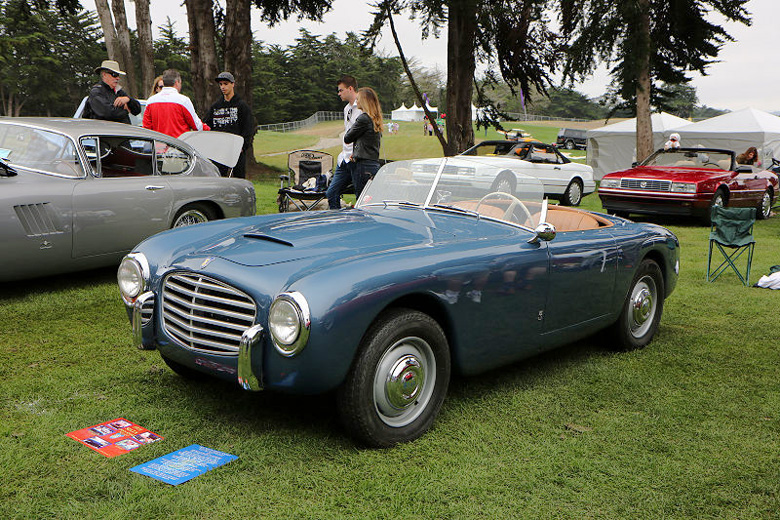
This Siata Gran Sport is one of the earliest Gran Sports with matching numbers, not that there were many built in the first place. Restored in 1991, it has achieved many awards over the year.
But just to be realistic, let me add that attending Car Week is anything but relaxing for most people. There are thirty plus events and gatherings, more than any one person could possibly attend. The cheapest motel will charge $250 a night with a three night minimum. Restaurants are booked and expensive. If you attended the Concorso, the Quail Lodge event, the Pebble Beach concours, and spent Saturday at the track, you would have spent over three thousand dollars just on admittance tickets for two people. And then there is the traffic, which can be characterized as “batshit-bonkers.” It will cross your eyes, particularly if you did not plan ahead and take the car with the automatic gearbox. But in spite of all that, if you are a car enthusiast, you must be there.
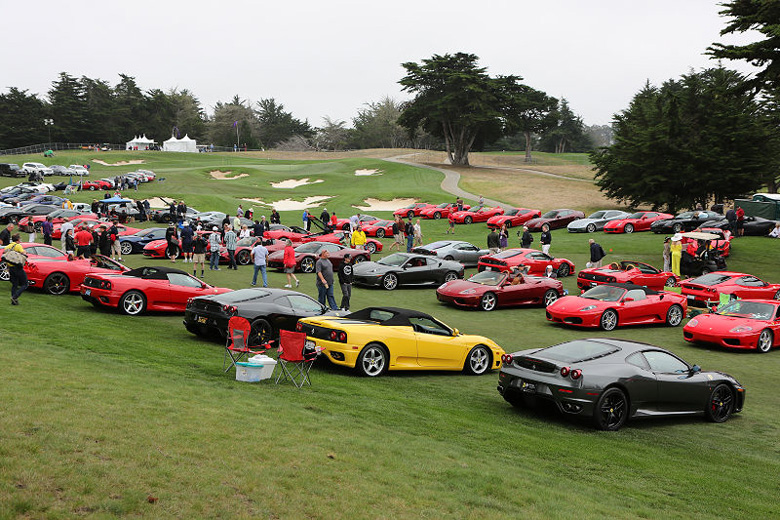
Traffic jam, yes, but the cars that jam up the roads are usually Ferraris, Alfas and Lamborghinis, making even traffic nightmares a dream for some.
I would like to say a word about our photographer for Montery Car Week for the last few years: Hugues Vanhoolandt. Hugues comes here from Belgium to chronicle the week’s events. He is a superb photographer, but equally important, he is an archivist, with a meticulously chronicled archive of over 1,000,000 automotive images. We could not be more fortunate, lucky really, to have Hugues as our photographer these events.
Kudos to Tom McDowell and the other people that make this huge event happen: the staff, volunteers, helpers, and the people in each club who take on the massive logistical task of putting a thousand cars on the show field in perfect order by 8 am on Saturday. Tom says that in every Italian event you must expect a little chaos, but there was no chaos here because of the enormous amount of time and effort spent in organization and planning.
Background to Concorso
VeloceToday has thousands of readers all over the world. Many have not attended Car Week, so here is a bit of background about the area, and why the Monterey Peninsula hosts upwards of fifty thousand car enthusiasts every August.
The city of Monterey is one of the most historic sites on the West Coast. It is an area of great natural beauty, of land and sea. Monterey was the capital of what is now California when it was ruled by Spain and Mexico. After the Mexican-American war, California became part of the U.S. in 1846. Until the 1950’s it was known for its abundant fishing. Today, it has numerous attractions: the Monterey Jazz Festival (since 1958) Cannery Row, Fisherman’s Wharf, and the Aquarium. It is adjacent to the Pebble Beach gated community (one of the golf meccas of the U.S.), the 17 mile Drive, Big Sur, and the Laguna Seca racetrack. Some noted artists and writers have lived and worked there, including obviously novelist John Steinbeck. It is adjacent to the Monterey Bay National Marine Sanctuary, covering 276 miles of coastline, including the largest and deepest underwater canyon off the Pacific Coast. Notable schools include the Naval Postgraduate School, the Defense Language Institute, and the California State University of Monterey Bay, situated on Fort Ord.
It has a cool-summer Mediterranean climate. Summers are cool and foggy, and the cold water of the bay causes summer nights to be unusually cool, even though it is located at the same latitude as Death Valley!
Fort Ord was a very large (45 square miles) U.S. Army post, established in 1940, and decommissioned in 1994. It was a training and staging area for troops being sent to Korea and Vietnam, and at one time had fully fifty thousand troops in garrison. In 2012, the Fort Ord National Monument was created by the President, covering 14,000 acres. The U.S. military has upwards of 150 golf courses throughout the U.S. and the world, so naturally there would be a couple at Fort Ord, and these have recently been privatized and remodeled and serve as the venue for the Concorso.
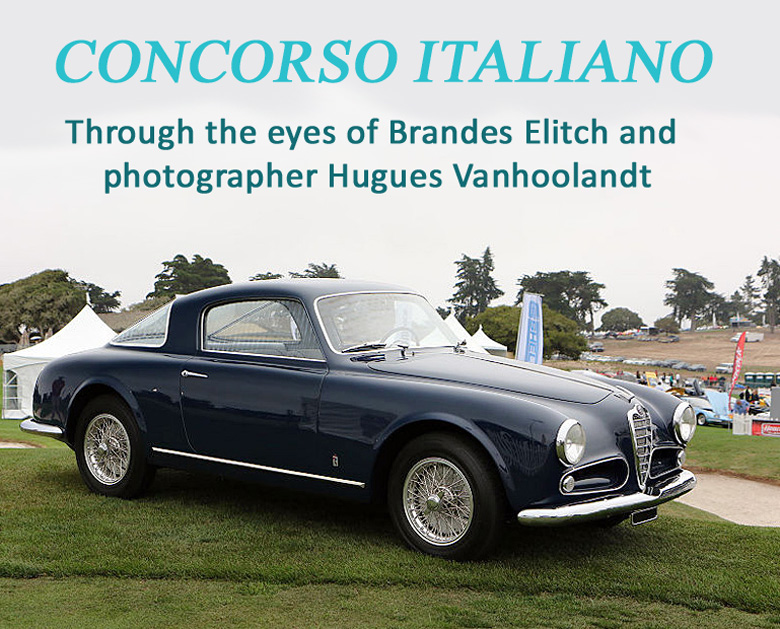
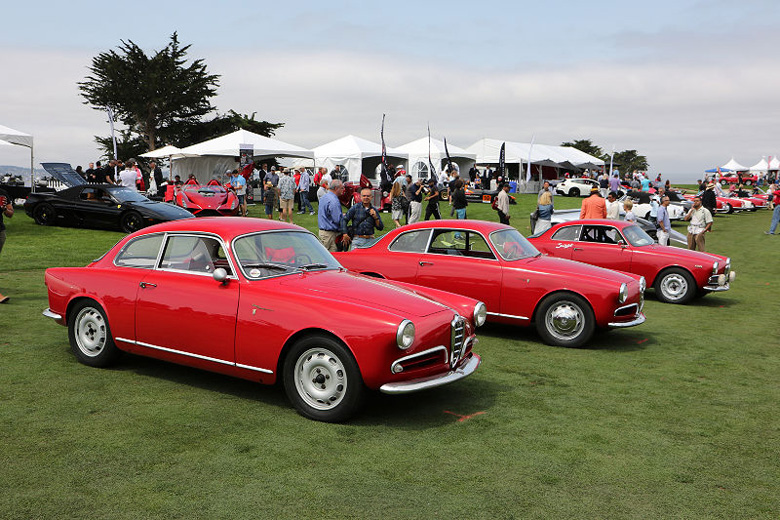
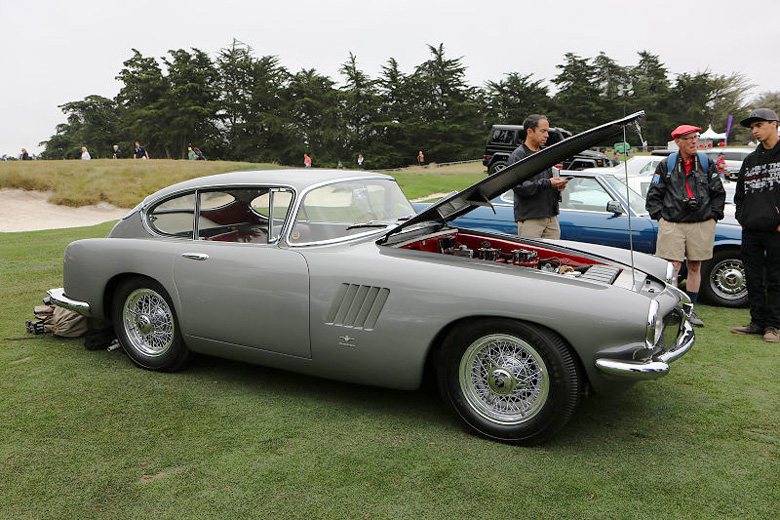
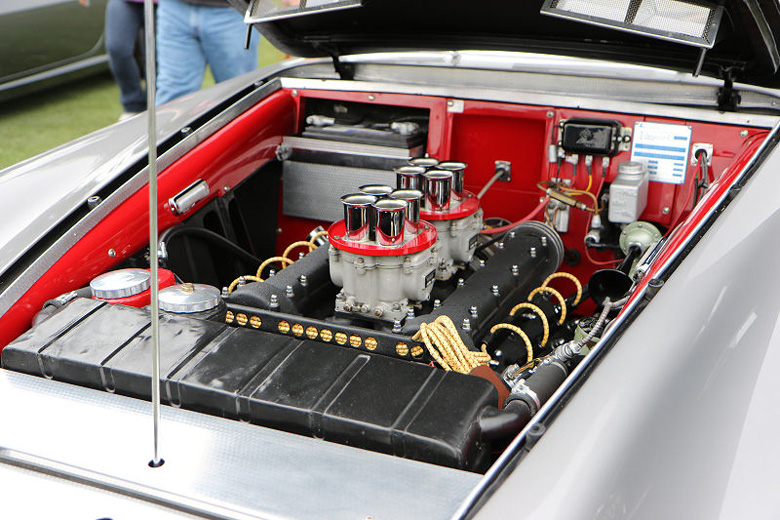
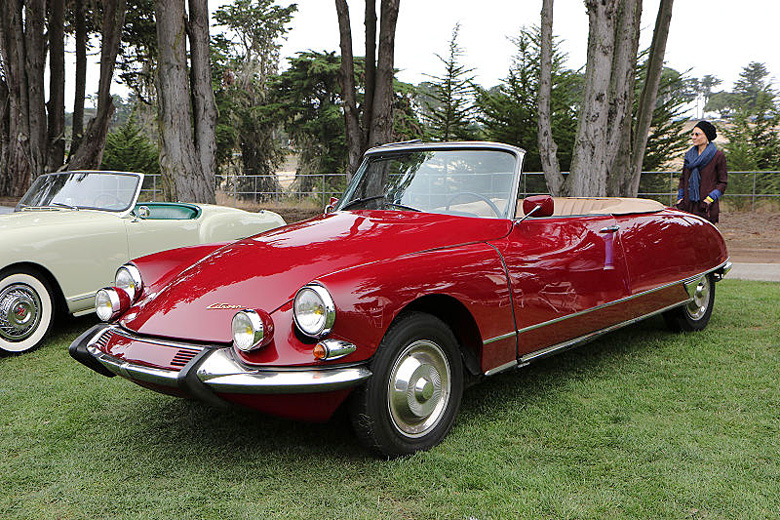
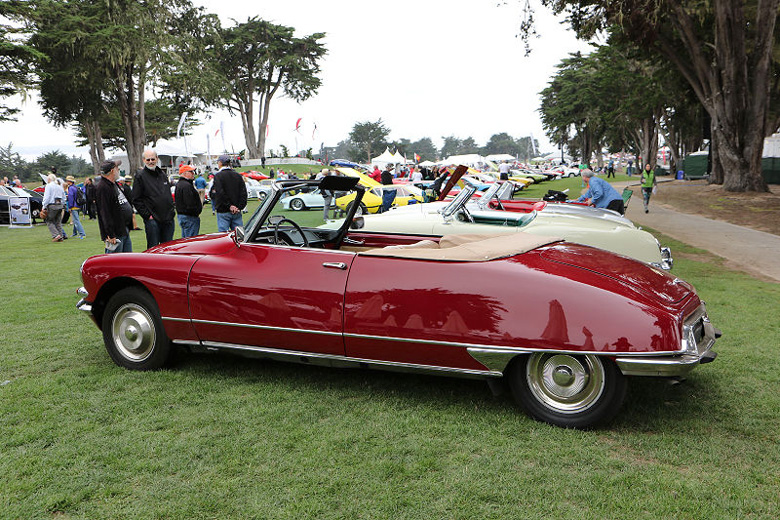
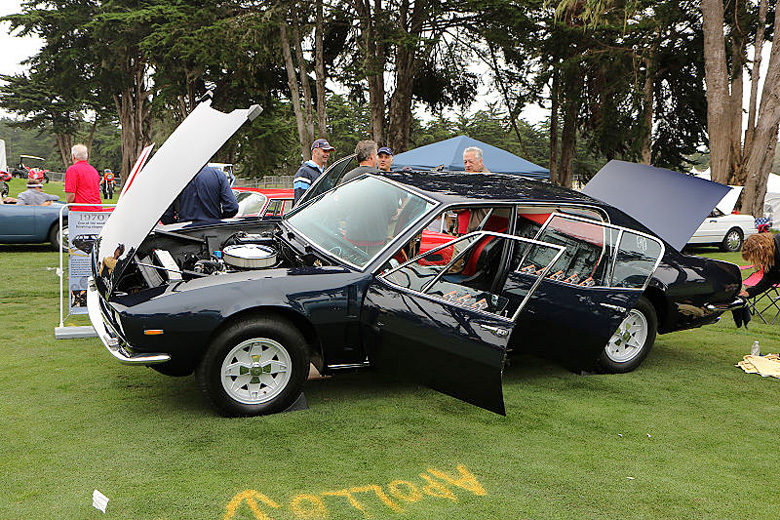
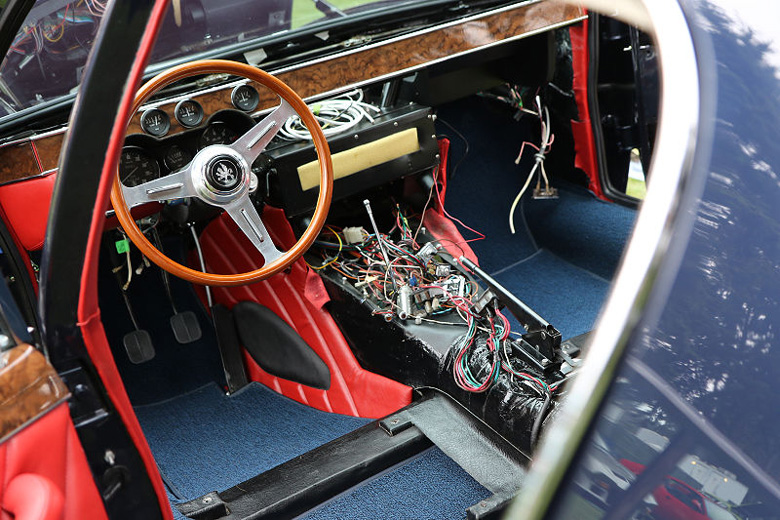
The creator of the Pegaso was WIFREDO Ricart, not WILFREDO. This is a common error, regularly repeated in print.
We stand corrected….
The Pegaso is well known to older eastern car nuts. A striking coupe was a centerpiece of the New York car show when it was introduced. What was most striking was the paint, which was a deep metallic, shaded from yellow to orange on every panel. Furthermore there was a story circulating at the time. The show cars were driven North through Connecticut on the Wilbur Cross Parkway, which had one of the countries’ first permanent Radar installations. The story had the radar operators clock three consecutive cars at speeds ranging from 125 MPH and up.The radar was sent for recalibration!
Graham Earl….Thanks for that correction on spelling of Wifredo Ricart’s name. Everything I’ve read had it Wilfredo, so I’m sure I’ve been pronouncing (and spelling) it wrong for years! Peter Brock
What a great price money on the green with all these Ferraris…Thanks for the story and the beautiful pictures.